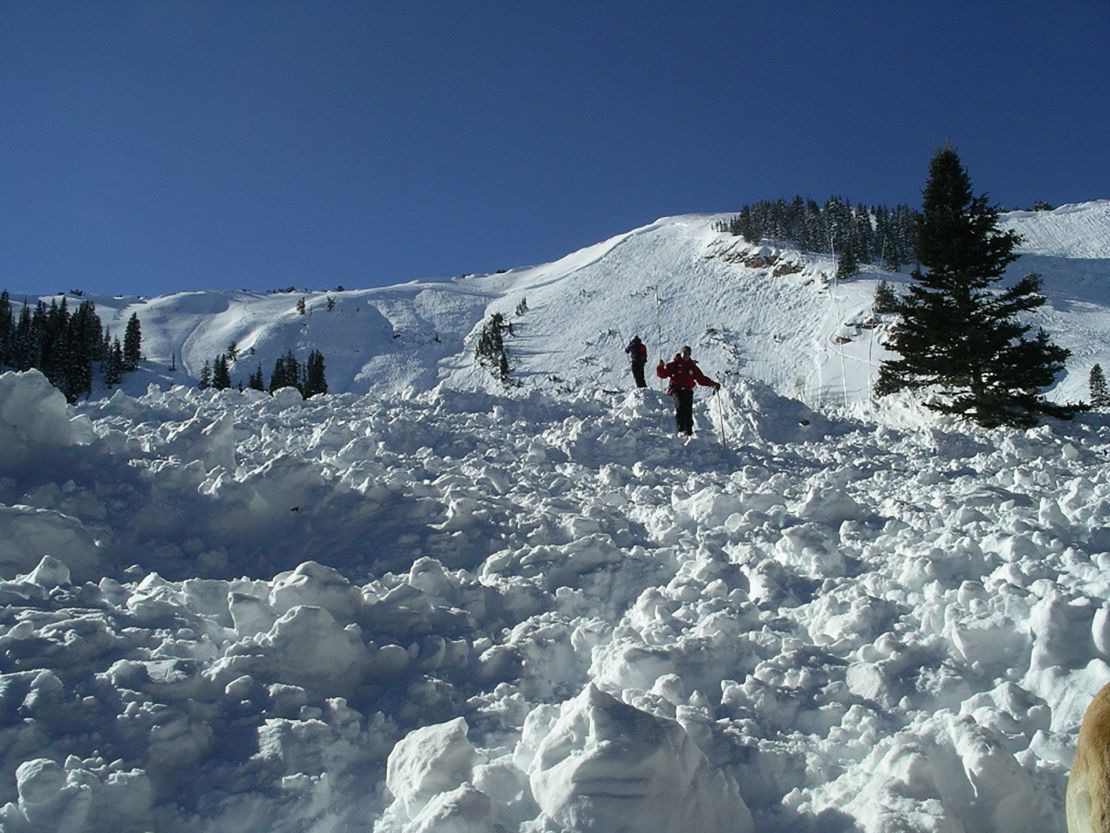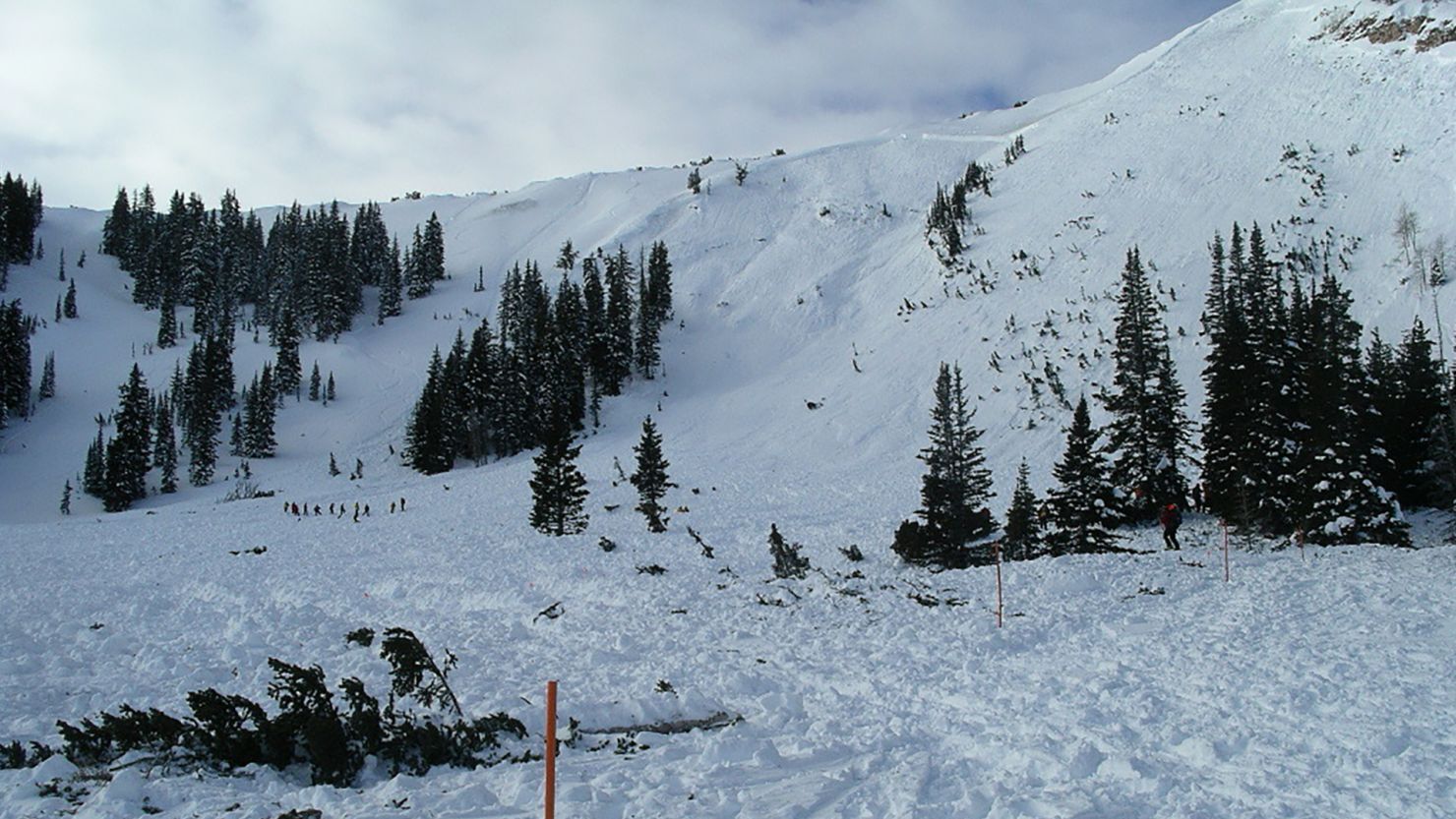Editor’s Note: A version of this article originally appeared in the weekly weather newsletter, which releases every Monday. You can sign up here to receive these every week and during significant storms.
You might have heard over the weekend; a man survived an avalanche after falling off a 50-foot cliff while skiing in Colorado.
Yes, you read that correctly. The sad truth of the matter is surviving an avalanche burial is rare. According to Jake Hutchinson, an avalanche rescuer and safety instructor in Utah, it’s very rare. And recent studies show large-scale avalanches might be on the increase because of climate change.
“That’s the hard part about the avalanche rescue world is that we very rarely can get people there in time to make it a live find,” Hutchinson pointed out. “Realistically, people have a really a pretty good chance of survival if they can be fully dug out in the first 15 to 30 minutes of burial.”
Hutchinson has been working in the avalanche rescue world for nearly 30 years and admitted he has lost count of the number of bodies he’s recovered. He said it’s not the cold and hypothermia that kills, it’s the lack of oxygen. “Unfortunately, that results in fatalities really quickly. And so, time is really against us.”

Hutchinson remembers one avalanche he was lead rescuer on in 2004. The initial call indicated 28 people were buried. Twenty different organizations came to help sift through 40 acres of debris, an area about the size of 30 football fields.
A four-day operation resulted in only one person being buried and found deceased on the second day. The other 27 skiers who were presumed dead actually escaped the burial and were only enveloped in the avalanche cloud, not the avalanche itself.
He explained most avalanche fatalities come down to human error. Ninety percent of avalanche incidents are triggered by the victim or someone in the victim’s party.
Going backcountry skiing without the proper equipment, without the proper training and making just one bad decision can make the difference in life and death.
“You’re walking out there to ski, and you don’t take at least a basic avalanche course, you might as well be crossing a highway with a blindfold on. You might make it across, you might not,” Hutchinson asserted.
It might sound harsh to some, but after more than 50 avalanche rescues Hutchinson has been a part of, with only a handful of live finds, it’s the reality of how deadly avalanches are.
“I think people underestimate either the potential of a slope, like what kind of avalanche it can create, or they have overconfidence in what I call margins, their margin between being Safe and hazardous.”
According to the National Oceanic and Atmospheric Administration (NOAA), most avalanches occur during or just after snowstorms on slopes between 30 and 45 degrees.
They often occur when there is a weak layer of snow underneath freshly fallen snow. A weak layer of snow is a layer that doesn’t stick well to the other layers. It could be from a change in temperature between the layers, or if a layer of frost gets buried under freshly fallen snow, which can cause weakness in the snow as well. It is usually where the snow will fracture, resulting in an avalanche.
And it seems avalanches may become more frequent as the climate warms.
According to a new study published by Nature in 2021, large-scale avalanches could become more common. The study states there is “a potential increase in large magnitude events driven by warming temperatures and spring precipitation.”
Hutchinson added he has seen an increase in large avalanches in recent years.
“Absolutely. I think this current period has had some of the largest, late December early January avalanches, I remember seeing ever, and they’re widespread all over the West.”
He thinks it’s a combination of the big early-season storms, followed by long dry periods, which creates a lot of weak snow. Then larger than usual storm systems occur on top of weak snow, which are producing exceptionally large avalanches.
“With a wetter and warmer snow climate, consequences of burial may become more severe,” the authors wrote in a review on the ‘Effects of Climate Change on Avalanche Accidents and Survival’ published in 2021.
Their review indicated avalanche activity will decrease in spring and at lower elevations but increase at higher elevations in winter because of more favorable conditions for wet-snow avalanches earlier in the season. It also mentions when avalanches do occur, they could be harder to survive because of the changes in snow density because of climate change.
With the potential for avalanches to increase, your risk while backcountry skiing could go up as well, especially if you aren’t careful.
I recorded a “how to survive an avalanche” video for CNN several years ago and was “buried” in an avalanche on the mountainside of Steamboat Springs, Colorado, with the help of their avalanche rescue team. I was only buried for a few short moments (and it was all controlled), yet it was absolutely terrifying.
Hutchinson emphasized the best way for people to survive an avalanche burial is “to have well-trained partners with proper avalanche rescue gear. That is just the sad reality of it. And it’s pretty rare for organized rescue to be able to get there in time to make a difference, and it does become recovery.”
Hutchinson noted three tools should absolutely be with you at all times while backcountry skiing:
- Beacon
- Shovel
- Probe
He advised to always get the forecast before you go as well. And if it doesn’t look safe, avoiding the area altogether is your best option.
“To ski in powder is really fun. And it’s a huge dopamine high and when you get away with it, that’s a really huge hit to the reward center of your brain,” Hutchinson acknowledged. But he added, “It doesn’t matter what cool thing you did in the mountains if you didn’t come home to talk about it, because coming home at the end of the day is the most important part of all this.”



